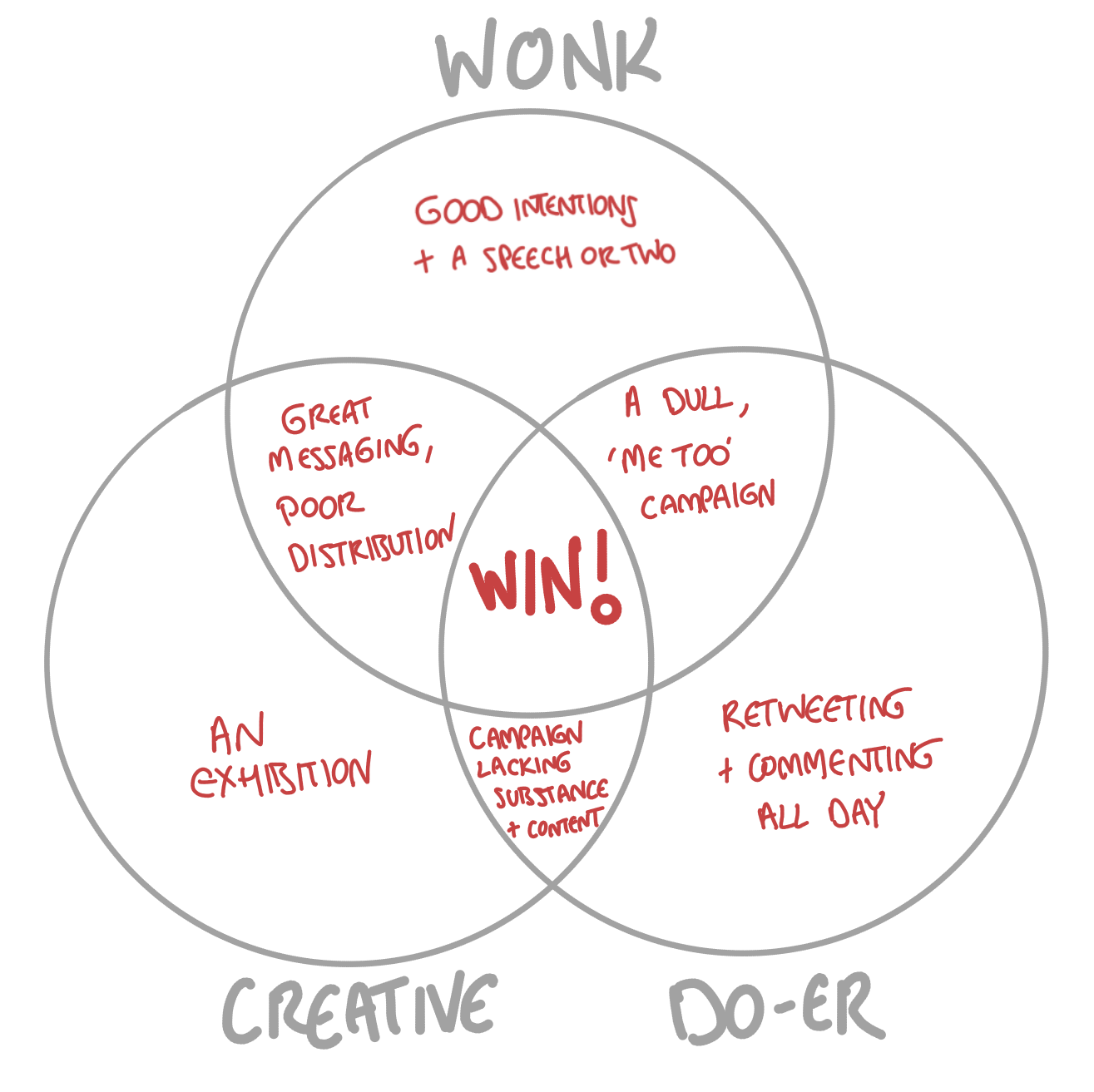This newsletter has been around for almost a year. In that time it has picked up some buzzwords and insidery phrases. And I notice I'm using them a lot.
So I thought it was time for an explainer of these terms.
Let's go!
* * *
A · B · C · D · E · F · G · H · I · J · K · L · M · N · O · P · Q · R · S · T · U · V · W · X Y Z
A
Activist citizen
This is you. You probably don't consider yourself "an activist", because activists wave banners and shout a lot. But you want change, and you're willing to confront power to get it.
Activist group
A group of people who come together for a campaign. It could be informal, or an incorporated organisation.
Advocacy
Asking power nicely for change. AKA lobbying. It can be very effective, if done right.
But if it's not complemented by other tactics, it's easy to get co-opted by the Establishment.
Advocacy can also mean simply pushing a point of view. As in 'push-button advocacy'.
Agenda mapping
Getting what you want from someone, by identifying where your wants and theirs overlap, and giving them what they're after. It's a key principle of media relations. But you can also apply it to debates, lobbying, or even organising your team.
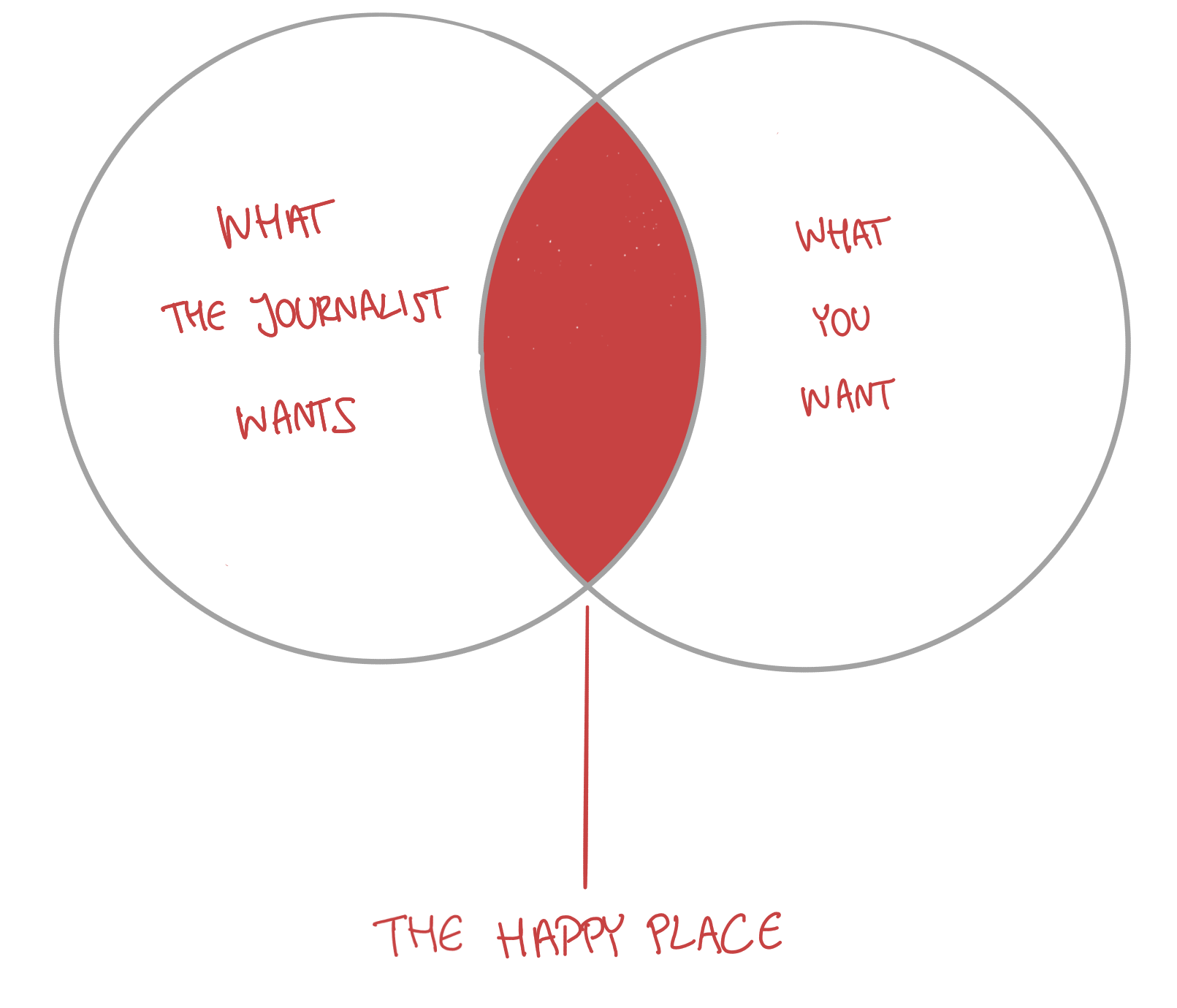
B
Basket of desires
A list of things everybody is seeking, like adventure, power and respect. You can use this to target campaigns better, and to grow your team. Coined by marketing expert Seth Godin.
Barriers to entry
How easy your campaign or group is to join or act on. For many digital campaigns, for example, the cost of joining is a simple social media share.
Bias-berg
The eight biases of the media, as documented by journalist Brooke Gladstone. Being aware of these biases means you can 'hack' them to get media coverage.
Why 'berg'? Because only one of these biases – ideological bias – is easily visible. Most campaigners ignore the rest. To their detriment.
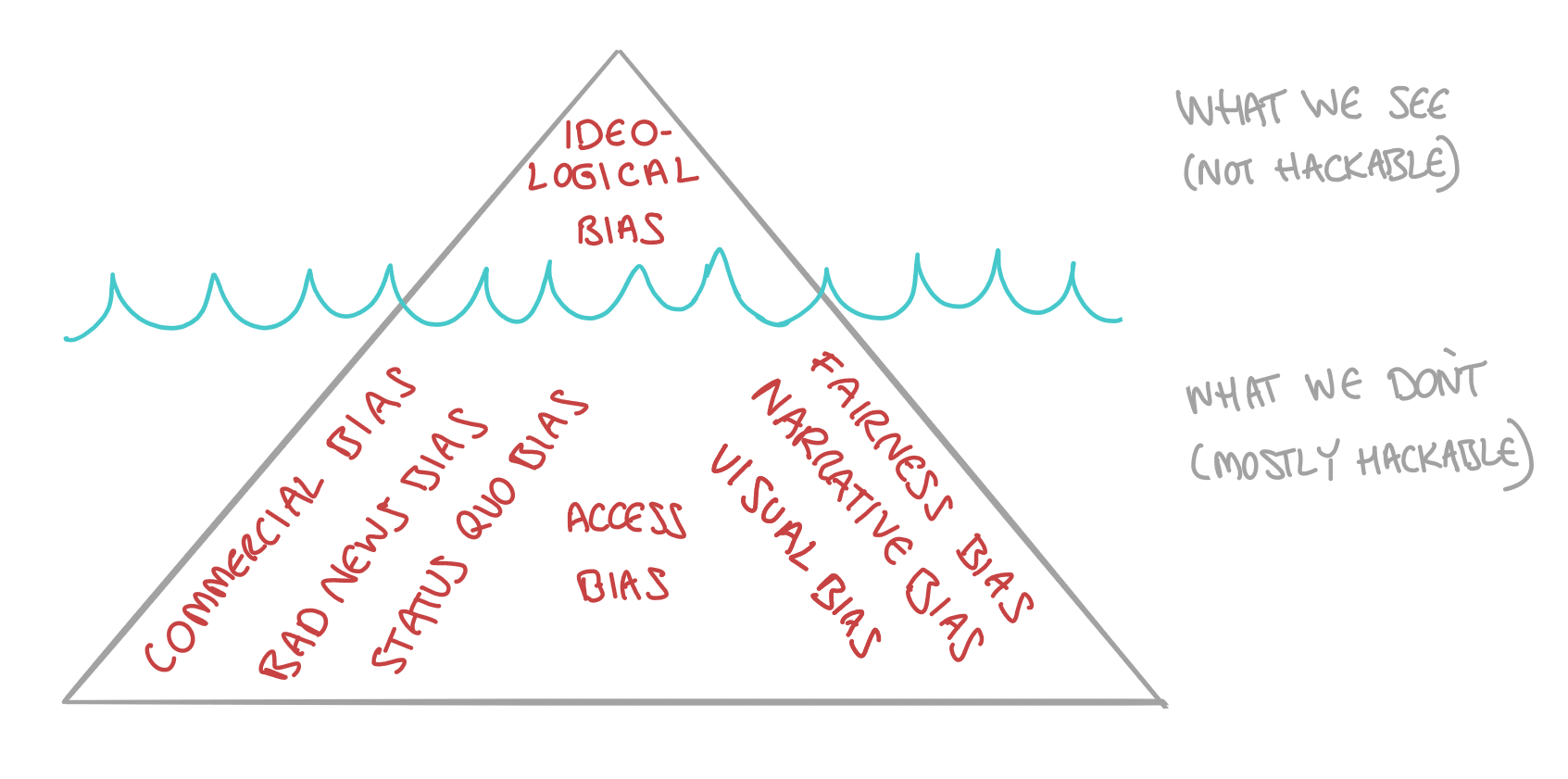
C
Campaign
The project you're working on to achieve change. You build this with the impact method. It has an issue, an ultimate goal, a target, and often a team behind it. AKA activist project.
Confirmation bias
The human tendency to look for information that supports the views you already hold. You can be a more effective activist citizen if you're aware of it in yourself... and others.
Coordinated do-ocracy
The way I recommend running a campaign with a team. So-called because those who do the work make the decisions. There's a coordinator – probably you! –who guides the project, keeping it moving towards its goal.
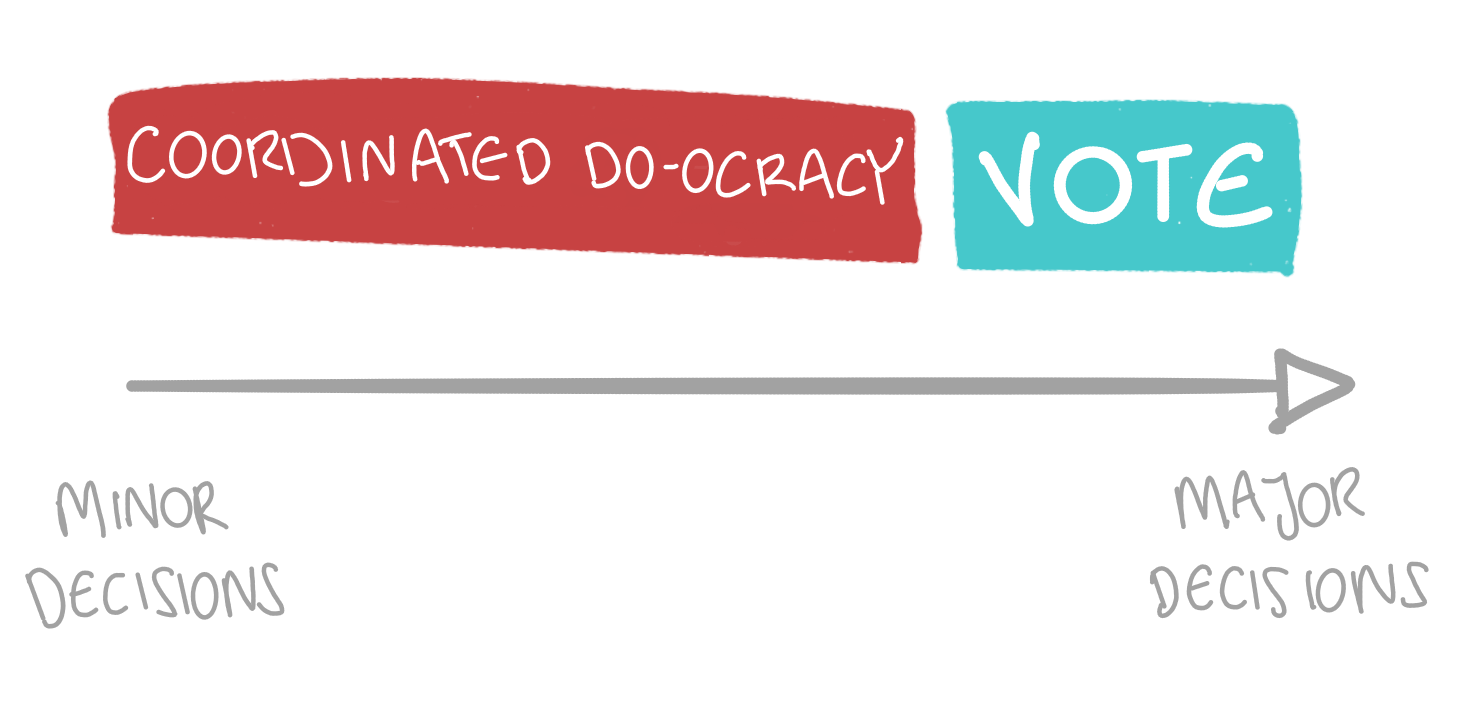
Core features
What participants need to see in a campaign. Core features make it attractive for people to join, and easy for you to coordinate. The campaign should:
- Be about addressing an injustice that members are outraged by
- Have as its ultimate goal something realistic and achievable
- Give members the belief that they are part of something historic; a battle bigger than the campaign
- Have a plan that’s easy for members to follow. The campaign itself should be simple for new members to join
Creative (campaigning skillset)
One of the three essential campaigning skillsets. The creative provides the innovative ideas to make change happen.
Creative protest
Innovative protest actions that give photojournalists something worth shooting (like these). Not placards and crowds. A creative protest makes your campaign demands harder to ignore.
D
Deepfakes
Fake videos that use AI to create a likeness of a real person. They have the potential to revolutionise subversive activism. But they can also be used maliciously. We're not talking about these enough. (The longterm answer to deepfakes? Media literacy.)
Direct action
A campaign tactic to obstruct or deter contentious practices. E.g. strikes, boycotts, sabotage, blockades, sit-ins, hacktivism. Part of your toolbox.
Do-er (campaigning skill)
One of the three essential campaigning skillsets. The do-er is the organiser. They make the campaign run.
E
Establishment
Your opponent.
The people with the power. In politics, in industry, in the media, in defence. In Silicon Valley or Wall Street or Brussels or Davos. Being targeted soon in a campaign by you.
F
Filter bubble
An environment where you're surrounded by beliefs that conform to your own. Think social media, but also many activist groups. The Establishment uses this ideological uniformity to make you feel part of a tribe, and to provoke you to engage.
You can break out of it by following people you disagree with, and having productive conflicts.
G
Grassroots media relations
An under-rated type of campaign that can bring big results. Involves infiltrating legacy media by selling in stories you want, using agenda mapping.
H
Hallin’s spheres
A concept that explains how the media legitimises or delegitimises ideas. There are three concentric spheres: consensus, legitimate controversy, and deviance. A good model to understand how to popularise radical proposals, and how the Establishment tries to control the narrative.
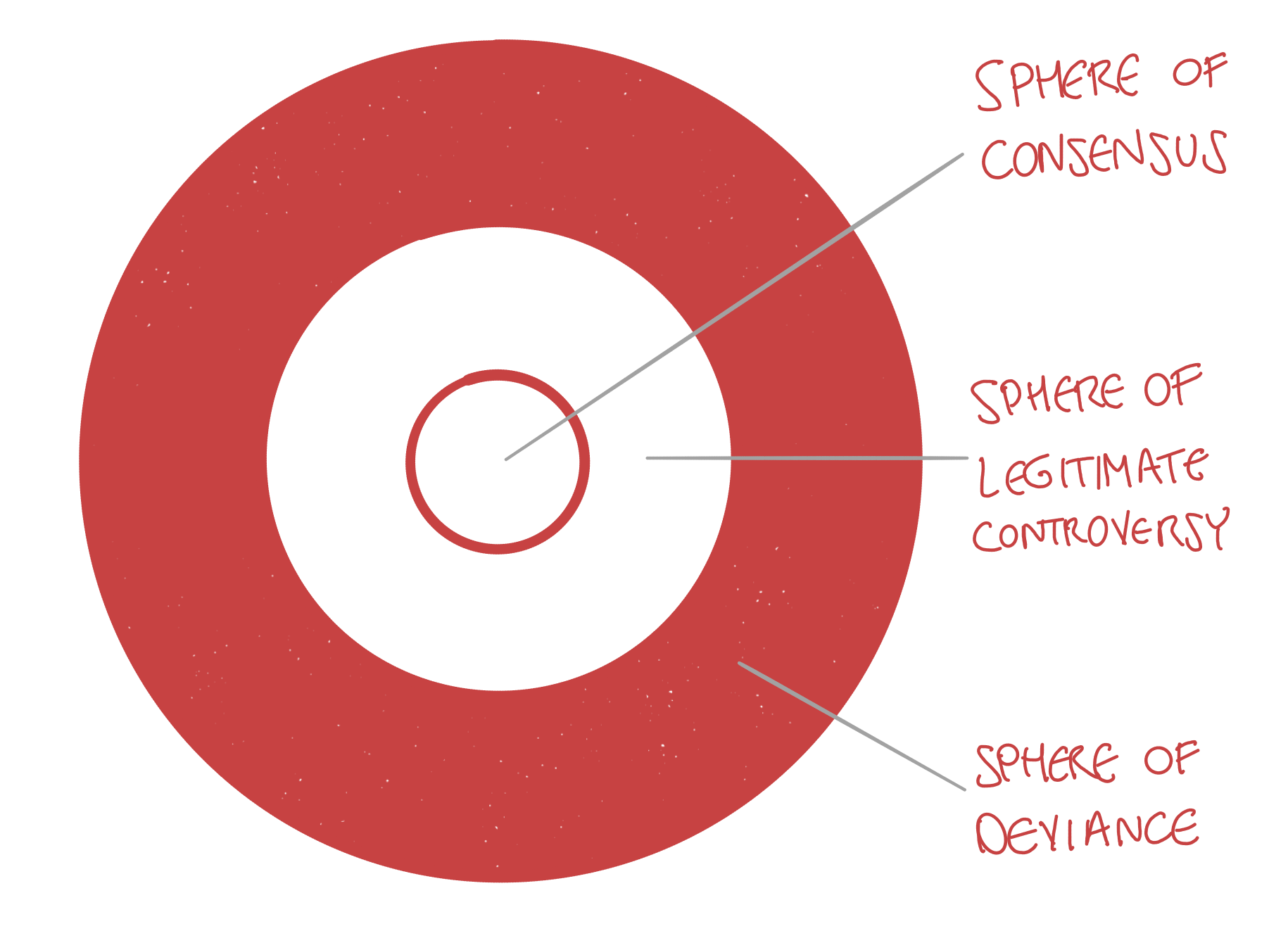
I
Impact
The whole point! If your campaign doesn't achieve this, drop it and start another.
Impact method
A guide for building campaigns that I co-developed. It underpins all my campaigning work, and it could help to structure yours. Top-line, it looks like this:
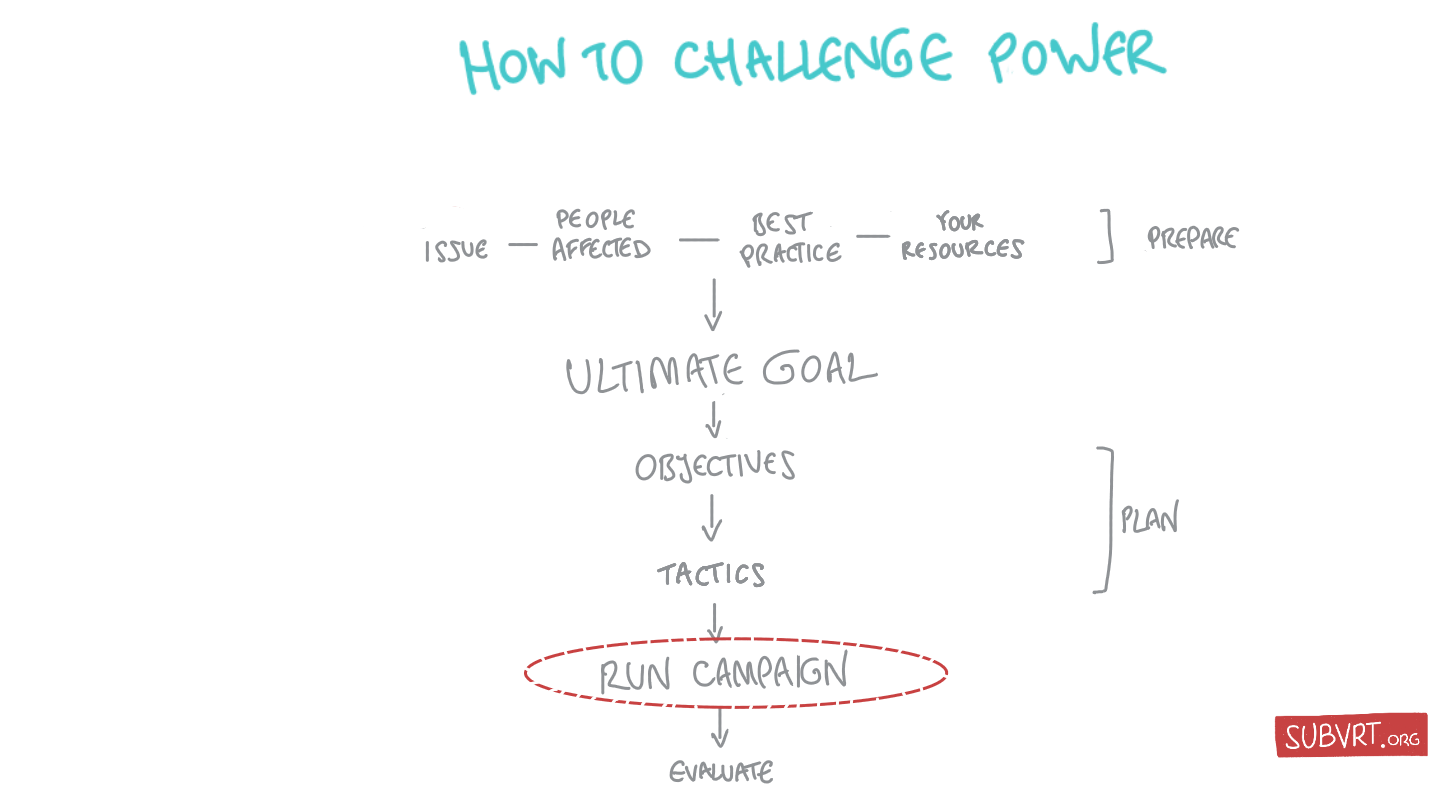
This campaign should have used it.
Incorporating
Making your activist team officially, legally recognised. For example in the form of an NGO. In most cases, it’s better to not incorporate, and keep your team informal for as long as possible.
Infinite space
The gap between doing something as an activist citizen, and doing nothing. The Establishment helps you cross this space easily with push-button advocacy. But it's a trick – it helps you chase your impulses instead of impact. Coined by Serbian political leader Radomir Lazovic.
Internal Process Optimiser
A self-appointed role that a member of your group takes on. Here, they obsess vocally over how to improve your campaign's processes. Often they do so as a substitute for helping to deliver impact or confront the establishment. They're are usually of little value to your cause. See also: tyranny of the annoying.
Issue
An injustice, an abuse of power, that outrages you. It might be at your workplace. Your child’s school. Over in City Hall. Or online.
Identifying your issue is the first step of building a campaign. It's vital though that it is something you can influence.
L
Legacy media
The corporate-owned media organisations. So-called because they had a traditionally powerful role, but it's waning. Aka establishment media, corporate media.
Lobbying
See advocacy.
M
Metacognition
The skill of thinking about thinking. Effective activist citizens have this. Even if they can’t change reality, they can change how they perceive it, so it doesn’t hamper them. They are able to reframe crises into opportunities.
Metrics
How you measure whether your campaign is doing well. Use numbers. Make it SMART.
O
Objectives
In the impact method, the smaller goals that make up your ultimate goal.
Online public shaming
Trying to ban/censor people after they have done or said something considered offensive. Cancel culture. It's not activism. But there are things we can learn from its success.
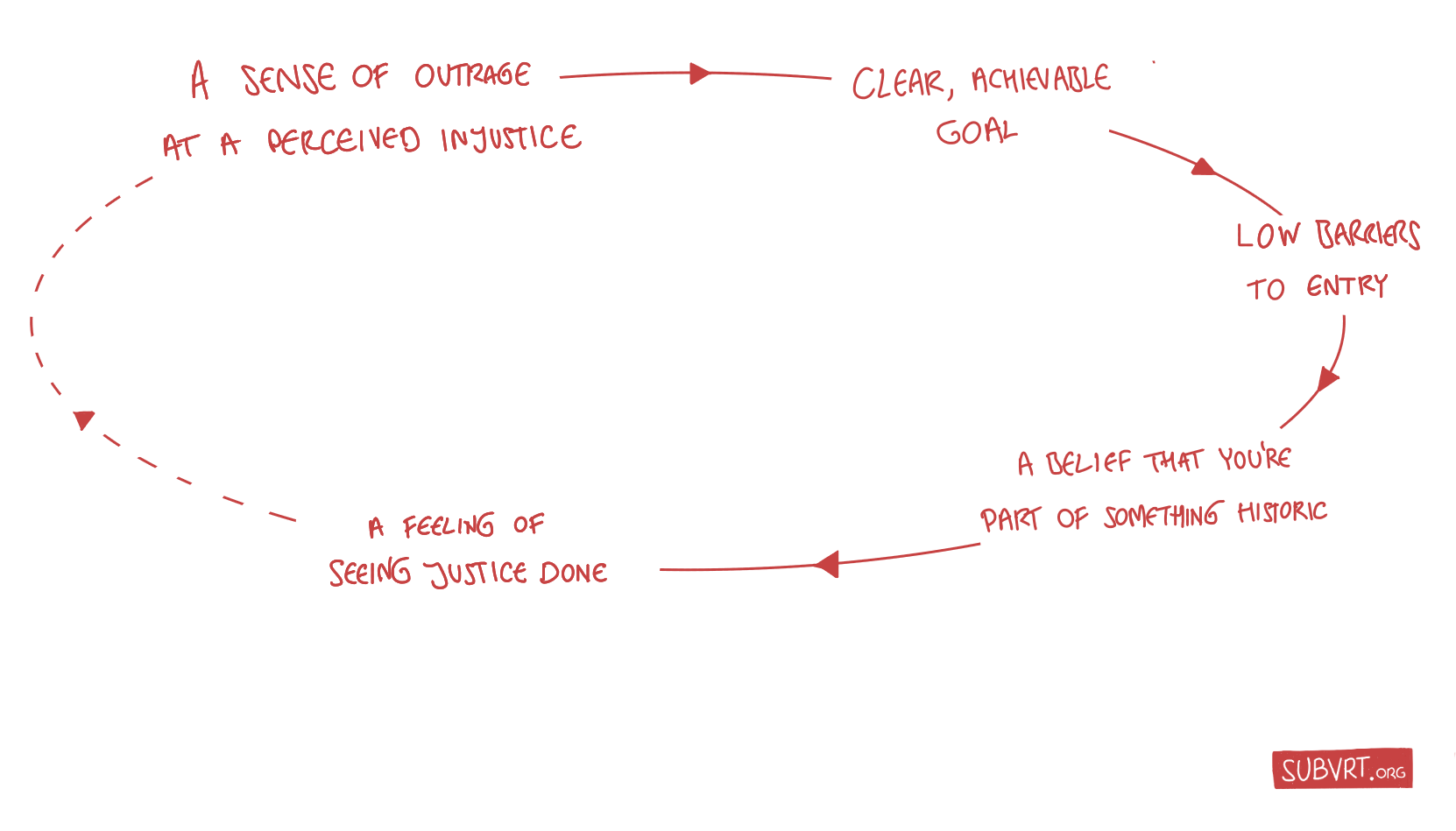
Outrage of the day
What social media platforms and legacy media try hard to get you to focus on. Doing so makes it hard for you to see your campaigns through. And unable to oppose the Establishment where it might make a difference. The opposite of:
P
Playing the long game
A recipe for campaign success. Pick one issue you can win, and see it through. Instead of getting distracted by internal fights or other battles (even important ones). Like MLK, and pioneering Amazon union leader Chris Smalls. AKA 'choosing your battles'. AKA 'keeping your eyes on the prize'.
Pressure points
Your target's weak spots. Pushing on these with your tactics will make your target take notice – and ideally act on your demands. Typical pressure points include the pressure for your target to maintain a good public image. Or their pressure to keep happy those they depend on for their power. Like their electorate, donors, appointing body or shareholders.
Push-button advocacy
The new normal of feeling you're partaking in activism by sharing a social media post. It sates our hunger to correct injustice by giving us junk food. It changes nothing. Don't succumb to it. Play the long game instead.
S
Safetyism
The damaging idea that you should always trust your feelings, and must protect them at all costs. It started with Gen Z – those born between 1995 and 2012 – and it’s spreading to older groups. Safetyism makes you easily offended – which means you can be easily manipulated.
Shark
An ideal campaigner. A terminator of an activist citizen, that gives the Establishment sleepless nights. Strive to be this.
Strict-father model
A model of managing a society, coined by linguist George Lakoff. Here, the public are disciplined, and shown how to behave through reward and punishment. The Establishment employs this regularly. And it often backfires and creates resentment, because it involves treating the public like idiots. The opposite is the 'nurturant parent' model.
T
Tactics
The actions that help you achieve the objectives of your campaign. A protest, petition, or strike are all tactics. Typically things that push your target's pressure points.
Target
The person, group or organisation with the power to make your ultimate goal a reality. In our Make Amazon Pay campaign, that was ultimately Amazon. Most of your objectives should relate to something the target needs to do.
If your campaign is targeting an institution, personify it in your messaging (e.g. Jeff Bezos instead of Amazon). Because it's easier for people to get mad at another person, than at an organisation, or a system, or an idea.
The only social media platform worth taming.
Tyranny of the annoying
Refers to people who want to use precious time spouting their political concerns rather than getting to work. Coined by ex-Sanders adviser Zack Exley. They should be pushed out of your group, promptly.
U
Ultimate Goal
What the world would look like with your issue resolved. Something achievable. When you make this a reality, you can stop your campaign and say "I won". As per the impact method.
W
Wonk
One of the three essential campaigning skillsets. The wonk understands the complex landscape of your subject matter.
